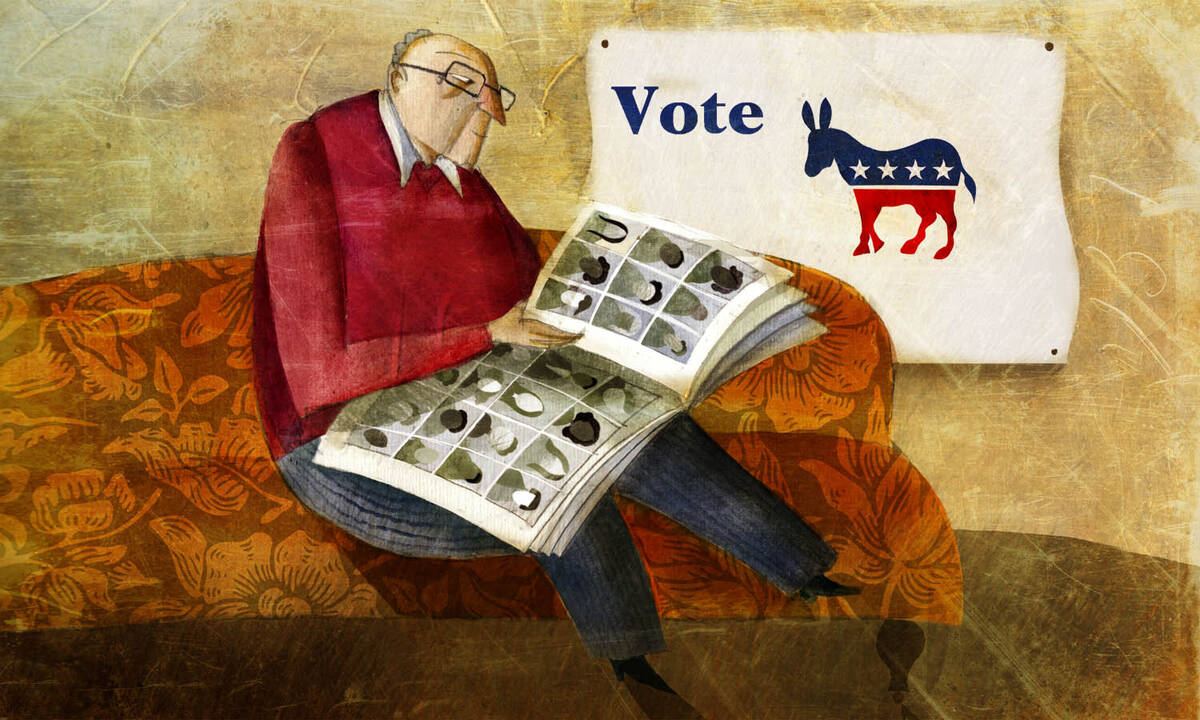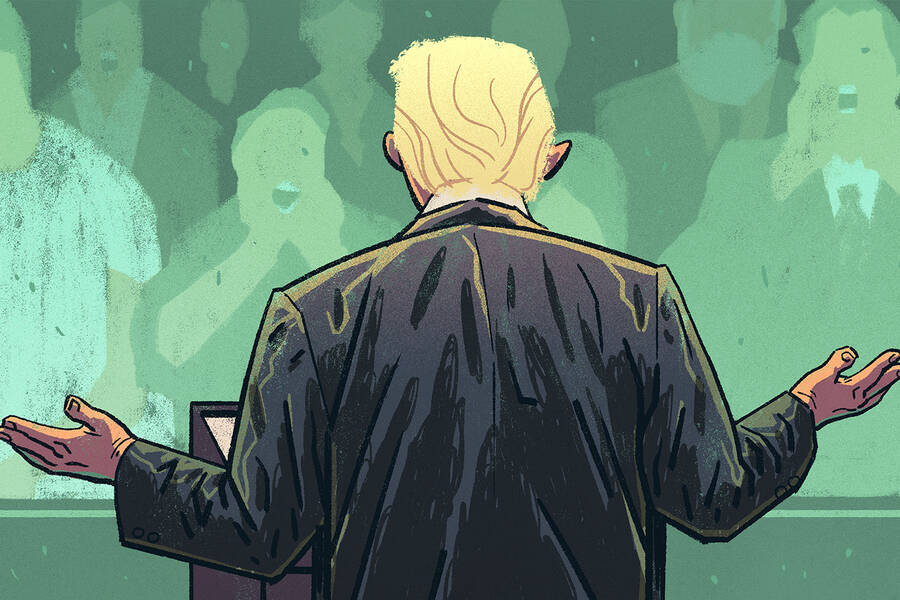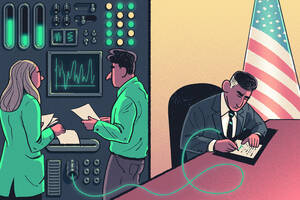Policy Politics & Elections Sep 1, 2020
How Did School Desegregation Shape the Political Ideology of White Students Later in Life?
A new study suggests that, more than four decades later, the impact of these policies on political leanings is apparent.

Yevgenia Nayberg
It’s been 65 years since the Supreme Court declared racially segregated schools unconstitutional in the Brown v. Board of Education decision. But American schools still have a glaring segregation problem. A recent report found that more than half of the country’s students learn in racially concentrated districts, where over 75 percent of students are either white or nonwhite.
Desegregating schools has been associated with improved long-term outcomes for Black students. Less is known of the long-term impact on white students who attended desegregated schools. One unknown: Did mandatory desegregation programs shape white students’ political ideology as adults?
Jörg Spenkuch, associate professor of managerial economics and decision sciences at the Kellogg School, is interested in this question and the way it could help illuminate broader ones: What determines our political leanings, and to what extent are they determined by experiences we have when we’re young?
To explore these ideas, Spenkuch teamed up with Ethan Kaplan, at the University of Maryland, and Cody Tuttle, a postdoctoral scholar at Princeton. In new research, they investigate whether white students who were assigned via court order to attend predominantly Black schools in 1970s Louisville, Kentucky, appear to have been shaped politically by the experience.
The researchers believe this is the first paper to consider whether mandatory desegregation programs leave an imprint on white students’ political views 40 years after the fact.
And it appears that, indeed, they do. The researchers find that white men assigned to attend predominantly Black schools in Louisville were more likely to be registered as Democrats and to support liberal causes four decades later than white-male peers who were not.
“For policymakers who are currently contemplating whether to lift school desegregation programs that are still in place, or to implement new ones, what’s important to understand is: What is the net effect of these programs?” Spenkuch says.
An Order to Desegregate in Louisville
When, in December 1974, a federal court ordered that public schools in Lousiville would have to be desegregated, it came as a surprise—and a hotly controversial one. The city, and Jefferson county in which it sits, each operated separate, unequal, and highly segregated school districts. Within Louisville itself, roughly 80 percent of white students attended schools that were at least 90 percent white, and 76 percent of Black students attended schools that were at least 90 percent Black. Jefferson County’s schools were nearly all white.
An appeals court decision in July 1975 ruled that full desegregation had to be enacted in Louisville and Jefferson County at the beginning of the next school year—which was less than two months away.
The ruling judge worked with experts from the Kentucky Commission on Human Rights and with staff members from both school districts to quickly draw up a viable busing plan. The resulting plan mandated that children would be bused depending on the first letter of their last names, their grade levels, and their race.
“I was surprised by how large the effect on party registration was. This is certainly a nontrivial effect.”
Tuttle, who is himself from Louisville, has previously examined the economic impact of the same Louisville desegregation program on both Black and white students. In that paper, he found that Black students who were bused to predominantly white schools appeared to see economic benefits later in life, while at the same time there was no change in the earnings of white students who attended predominately Black schools.
At the time, however, this plan sparked violent white backlash; on one of the first days of the school year, the Chicago Tribune reported, a mob of 10,000 white students at a suburban high school set fire to buses and threw rocks as Black students tried to board them.
Clearly, the court-ordered desegregation plan was met by many whites with an explosion of anger. But what were some of the longer-term effects on white students’ attitudes?
Yearbooks and Voter-Registration Records
To explore this, the researchers began by pulling names from the 1974–75 yearbooks of fifteen of the high schools that were part of the mandatory desegregation plan.
They hired Aristotle Inc., a company that maintains databases on registered voters and political donors, to pull information on individuals’ party registration, turnout history, and donations to various political groups.
The researchers’ sample comprised 8,900 white men, now in their late 50s and early 60s. Aristotle found at least one voter-registration record that matched the name and assumed birth year of about 70 percent of those men—roughly in line with national voter-registration rates.
Women weren’t included in the analysis because in that era it was likely that they changed their last names upon getting married, rendering the linking of yearbook names and voter-registration records impossible for the majority of them.
It’s important to note that the 1974–75 yearbook, from which the researchers pulled their sample, documented the last school year before the desegregation plan was announced. Spenkuch says that some portion of the white students in those yearbooks who were later assigned to be bused likely decamped from the area’s public schools in order to stay in a majority-white environment in a private school or in another district.
The researchers did this for a reason, Spenkuch explains. At this point in their research, their goal was to capture the net impact of the desegregation plan on all white students, whether or not they were ever bused.
“You can think of sitting on the bus and attending a predominantly Black school as the direct effect of the program—call it the exposure effect,” Spenkuch explains. “But there could also be an indirect effect, meaning your parents take you out of public school and you have a different set of experiences. If you are interested in the overall effect of busing, then we want to capture both of these effects.”
Because of this, the researchers say that their results probably account for a “lower bound” in terms of the direct impact of white students actually getting on a bus as required by the order.
The Lasting Imprint of Busing
For the white men on whom the study focuses, receiving an assignment to be bused to a predominantly Black school increases the likelihood of being registered as a Democrat 40 years later by more than two percentage points—and decreases the likelihood of registering as a Republican by roughly the same amount.
“I was surprised by how large the effect on party registration was,” Spenkuch says. “This is certainly a nontrivial effect.”
”[P]art of our job as social scientists is to explore the advantages and disadvantages of these policies.”
Furthermore, the effect on party affiliation is more pronounced among white men who were assigned to attend predominantly Black schools for two years, rather than one. (The court-mandated plan arbitrarily assigned some students to one year and some to two years of busing.)
The researchers also found that those selected to attend predominantly Black schools are significantly less likely to have donated money to organizations or political candidates that oppose same-sex marriage or abortion.
In other words, it appears that receiving an assignment to be bused to predominantly Black schools had the effect of making the white men in the sample less politically conservative than their counterparts who hadn’t received an assignment to be bused.
A Broader Look at Racial Attitudes
Spenkuch and his coauthors intend to continue this investigation. In future phases of their research, they plan to identify who ultimately graduated from which high schools and, therefore, see who followed through with their busing assignment. This will allow them to isolate the impact on white students who actually attended desegregated schools.
Pending funding, they also hope to survey thousands of the men in their sample to collect more granular data and, ideally, emerge with more nuanced insights.
For example, they’d like to learn more about whether being bused affected the students’ attitudes toward race or toward specific social policies.
The ultimate goal of the research is to discern whether the Louisville school desegregation program weakened racial prejudices and stereotypes among white students.
The answer to this question is not obvious, Spenkuch explains: On one hand, it’s possible that learning alongside Black students did have this effect on many white students. On the other hand, it’s plausible, especially given the scale of white protests, that a strong backlash to the enforced desegregation caused some white individuals or communities to withdraw into segregated bubbles where racial prejudices were even stronger.
“My view is that part of our job as social scientists is to explore the advantages and disadvantages of these policies,” Spenkuch says. “Then it will be up to policymakers and the public at large to decide how to weigh them.”



